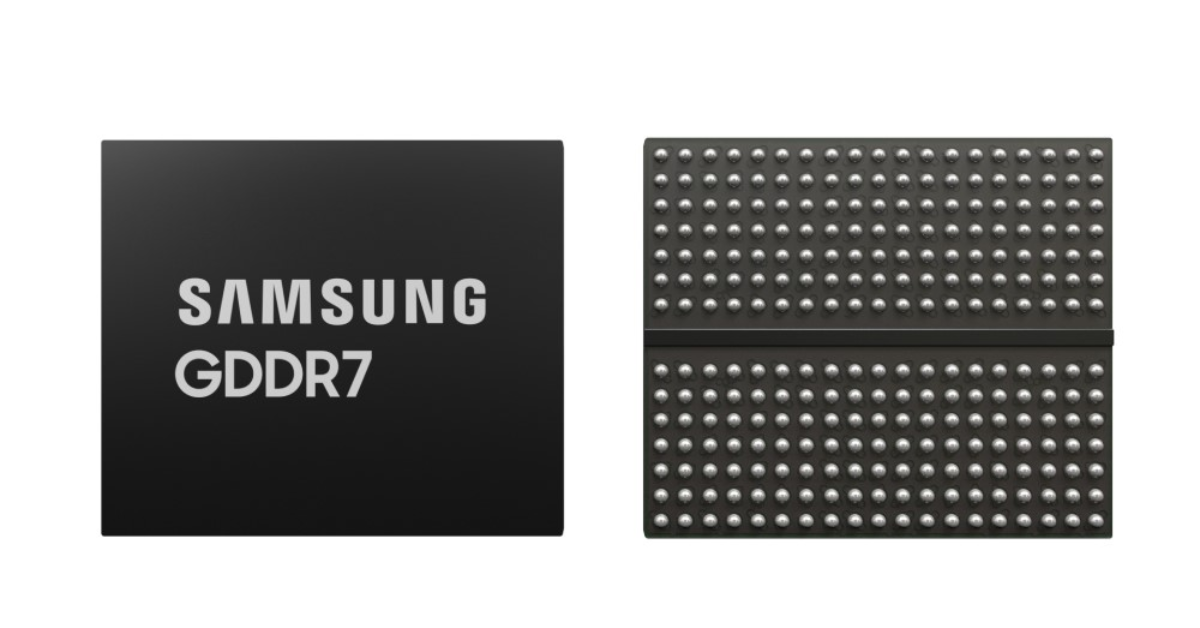Graphics Double Data Rate memory, or GDDR, originally known as DDR SGRAM (double data rate synchronous graphics RAM), stands as a pivotal element in high-performance devices, particularly in the graphics and AI sectors.

Breaking Down the GDDR7 Advancements
The tech realm witnessed a groundbreaking moment when Samsung previewed GDDR7 at Tech Day 2022. Subsequently, more details emerged on this promising new memory standard. The 2024 IEEE International Solid-State Circuit Conference in San Francisco is set to be the stage for GDDR7, featuring a session on High-Density Memory and Interfaces.
Decoding the Technicalities: PAM3 and NRZ Signaling
GDDR7 is poised to revolutionize data transmission with its utilization of PAM3 and NRZ signaling, aiming for remarkable data rates of up to 37 Gbps per pin. Unlike its predecessors, GDDR7 manages to enhance performance without a substantial increase in internal clocks, tackling the complexities associated with frequency hikes.
PAM3 Encoding: A Strategic Compromise
While its predecessor, GDDR6X, opted for PAM4 encoding, GDDR7 takes a strategic approach with PAM3 encoding, striking a balance between PAM4 and NRZ signaling. This not only facilitates higher data transmission rates but also diminishes the necessity for elevated memory bus frequencies.
Unleashing the Potential: Performance, Power, and Efficiency
GDDR7 promises superior performance compared to GDDR6, accompanied by reduced power consumption and implementation costs in comparison to GDDR6X. The memory subsystem’s optimization features, including four different read clock modes and parallel issuance of two independent commands, further enhance power efficiency.
GDDR7 Release and Prospective Integration
Anticipation surrounds the release of GDDR7, expected to coincide with the unveiling of the next generation of GPUs from industry giants AMD and NVIDIA. Samsung’s innovative GDDR7 is projected to set new transfer rate records, enhancing data throughput while maintaining lower power consumption per transfer.
GDDR7: A Game-Changer in Memory Bandwidth
Evolution in GPU Memory Bandwidth
The integration of GDDR7 in high-end GPUs signifies a monumental shift in total memory bandwidth. The theoretical implications, especially in a GPU like the RTX 5090 with a 384-bit memory bus, hint at a staggering 1.78TB/s of memory bandwidth, a remarkable 78% increase compared to its predecessor, the RTX 4090.
Overcoming Limitations in Memory Bandwidth
Modern high-end graphics cards, exemplified by Nvidia’s 4000-series, face limitations in memory bandwidth despite substantial increases in compute power. GDDR7’s introduction in late 2024 or early 2025 promises to address this bottleneck, fostering enhanced performance in high-resolution gaming, including 4K and beyond.
Samsung’s GDDR7: Leading the Charge
A Pioneer’s Showcase
Samsung Electronics, a trailblazer in the semiconductor industry, is poised to unveil GDDR7 at the 2024 International Solid-State Circuits Conference. Joined by SK Hynix, the company is set to spotlight the revolutionary memory’s applications across AI chips, gaming consoles, workstations, and various high-performance devices.
Unveiling the World’s Fastest GDDR7 DRAM
Samsung’s GDDR7 DRAM boasts a record-breaking bandwidth of 1.5TBps, marking a 40% increase over GDDR6. The strategic use of PAM3 and NRZ signaling enables data rates reaching 37Gbps per pin, coupled with a remarkable 20% improvement in power efficiency compared to GDDR6.
Innovative Heat Management
Samsung’s commitment to excellence extends to heat management, introducing a new Epoxy Molding Compound in the packaging. This innovation enhances thermal conductivity, reducing thermal resistance by up to 70%, ensuring stability in high-performance applications.
Future Horizons: GDDR7 in Next-Gen GPUs
Bridging the Bandwidth Gap
The prospect of GDDR7 reaching speeds of 37Gbps heralds a significant leap in graphics memory speed. Paired with a 384-bit bus, it promises an unprecedented 1.79TB/s, nearly double the capabilities of the RTX 4090. This advancement is poised to feature prominently in Nvidia’s RTX 50-series GPUs.
The Road Ahead
While GDDR7’s imminent arrival sparks excitement, practical integration into GPUs and other products may take time. The RTX 50-series and AMD RDNA4 are expected to usher in GDDR7, offering improved speeds. However, the pinnacle of 37Gbps VRAM might await the subsequent generation in 2026.
In conclusion, GDDR7 emerges as a game-changer, reshaping the landscape of high-performance devices and ushering in a new era of memory bandwidth and efficiency. As the technology unfolds, the industry awaits the transformative impact of GDDR7 on the future of GPUs and AI semiconductors.


1 thought on “Unveiling the Powerhouse: GDDR7 Memory Revolutionizes High-Performance Devices”